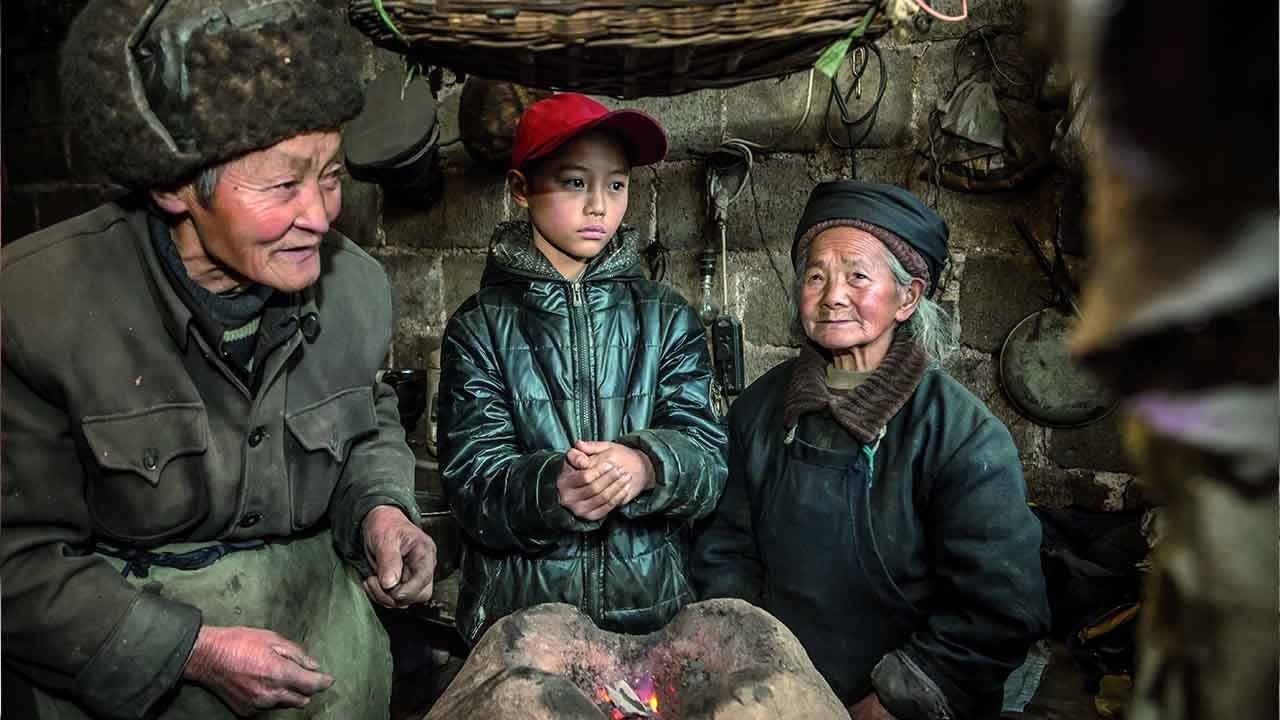
China
14:49, 07-Oct-2017
The Big Picture: China deals with widening wealth gap
CGTN's Hou Na

Her smile is perhaps the most touching and warm smile I’ve ever seen. At eighty-two years old, Zhang Zhengying feels she's never had it so good.

On the day Zhang Zhengying moves from her old house to the new one. /CGTN Photo
On the day Zhang Zhengying moves from her old house to the new one. /CGTN Photo
For decades, she lived in a shabby stone house less than ten square meters located in the mountainous area of Guizhou Province, southwest China.
There, she brought her children and grandchildren up.
Honestly, I was quite shocked when I visited her old house.
I couldn’t believe that such a humble house could burden Zhang Zhengying’s whole families and the pigs she raised too.

Zhang Zhengying’s old house /CGTN Photo
Zhang Zhengying’s old house /CGTN Photo
But now she lives in a two-story house with her own garden and she said planting and cooking are her greatest joys of the day.

Zhang Zhengying sits in front of her new house. /CGTN Photo
Zhang Zhengying sits in front of her new house. /CGTN Photo
Poverty remains a significant problem in Guizhou Province. The lack of water and fertile land in the mountainous area has hindered local development.
So Guizhou has decided to relocate its resources to new residential areas in poor mountain communities.
In 2016, the provincial government set up a goal of transferring 1.3 million people by 2020.
For many beneficiaries of the policy like Zhang Zhengying, the move indicates a dream come true.

Zhang Zhengying picks vegetables at her own garden. /CGTN Photo
Zhang Zhengying picks vegetables at her own garden. /CGTN Photo
There are 50 new villages like this in Dafang County of Bijie city in Guizhou Province, for relocating over ten thousand villagers from 3,500 families who lived in harsh conditions before.
But it's not enough to just build new houses. It's more important to teach people the skills they need to make a living.

Villages newly build for relocating villagers living under the poverty line. /CGTN Photo
Villages newly build for relocating villagers living under the poverty line. /CGTN Photo
Zhang Zhengying's son now works in the greenhouses, to grow vegetables.
It's part of the plan to help the farmers earn a living with their own hands.
Funding from local governments and enterprises has helped locals set up a complete industrial chain to make this possible.
Wang Kun from Evergrande Group which is a major sponsor of the project said his company has invested 3 billion yuan to Dafang County, providing aid to people living in impoverished conditions, ranging from subsidies to support startups.

Agriculture greenhouse built by Evergrande Group /CGTN Photo
Agriculture greenhouse built by Evergrande Group /CGTN Photo
Zhang Zhengying's family was among many living under the poverty line and struggling to get by.
A Pew Center survey released last year found that the majority of respondents in the 44 nations polled described the gap between the rich and the poor as a big problem for their countries.
A study by Peking University last year showed that the top 1 percent of families owned one-third of the nation's wealth in 2012, while the bottom 25 percent had only about 1 percent.

CGTN’s Hou Na interviews Zhang Zhengying and her son. /CGTN Photo
CGTN’s Hou Na interviews Zhang Zhengying and her son. /CGTN Photo
In China, income inequality has become a key issue, while the country enjoyed rapid economic growth for more than three decades to become the world's second largest economy. China still has 70 million rural people living below the poverty line.
The top leadership has urged governments at all levels to beef up what it calls "precision" relief measures as the country has set a target to eradicate poverty by 2020.
1738km

SITEMAP
Copyright © 2018 CGTN. Beijing ICP prepared NO.16065310-3
Copyright © 2018 CGTN. Beijing ICP prepared NO.16065310-3